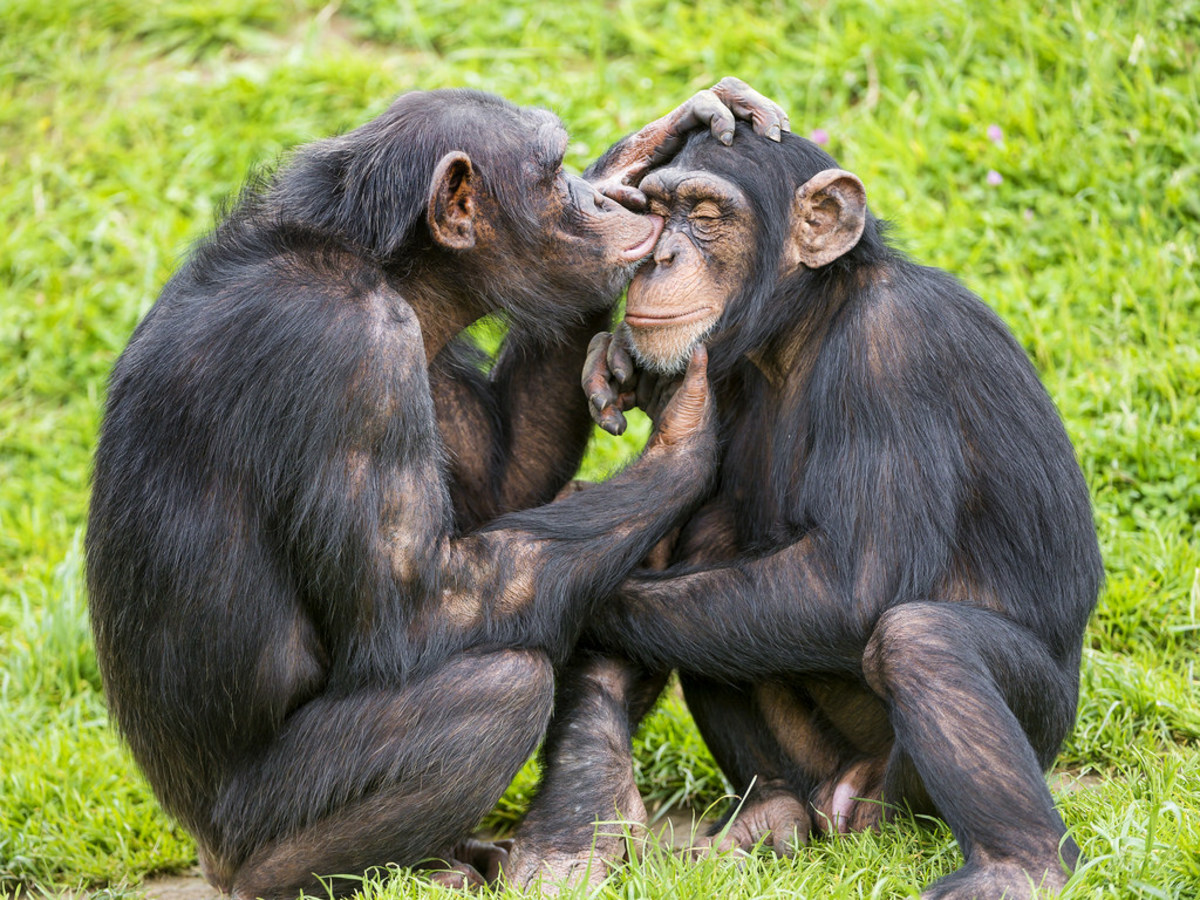Monogamy is not natural
We are Apes. We are great Apes. Humans, Chimpanzees and Bonobo Apes split off from a common ancestor about 5 million years ago. No primate that lives in a group is monogamous. Gibbons are lesser apes, do not live in groups, stake out a fiercely defended territory and are monogamous. Of course they are monogamous. Neither male nor female let another gibbon near enough to even think of non-monogamy.
Humans are supposedly naturally monogamous. With a divorce rate that is growing (serial monogamy at best), infidelity no longer the main reason for divorce, swingers clubs, polyamory and open relationships, and the observations that many couples find long-term sexual fidelity hard and that sexual desire and passion often fade even though love deepens this notion begins to look suspect.
Love and lust are not the same. The myth of natural monogamy implies they are the same but culture deprecates incest, which blurs intra-family love and lust and ignores the logical consequence that close friends should also regularly engage in sexual intercourse.
Marriage is supposedly a universal human custom but there are cultures which have no concept of marriage, regarding the notion of fidelity as depriving people of autonomy and choice. The Black Slave Culture of Pre Civil War America was forbidden the institution of marriage and relationships were fluid and changed regularly with no stigma attached to the children of temporary relationships, unlike the dominant “Christian” culture, where the Religion of Love, whose founder said “Let the children come unto me” stigmatised children born out of wedlock and condemned them to a childhood of hell in orphanages and “religious” institutions.
And yet with all this the idea of monogamy as natural persists, with non monogamy regarded as “cheating” and those who practice it as “Immoral”, at least if they are poor, for different rules have always applied to the rich and powerful.
Animals
Sexual reproduction is not universal. Not all species that reproduce sexually indulge in sex. Of those that do not all form couples and few of those that do are sexually monogamous. If monogamy is defined purely in terms of sexual fidelity then none of the great apes are monogamous and only gibbons are monogamous. Even that famed example of lifelong monogamy, the swan, has been found to change partners occasionally.
In some species the male is dominant and keeps a harem where a single male has exclusive access to several females. These species include Deer, Lions, Gorillas, early Mormons, adherents of at least one major religion, and in the past has included kings and emperors. Access to females is often determined by combat between males. Interestingly, in his book The language instinct Steven Pinker notes that while alpha male red deer are fighting for dominance the females get fed up waiting and mate with beta and gamma males. A similar process occurs with humans where the posturing of young alpha males is regarded as idiocy by females, and, in the case of war, alpha males go off to war while the betas and gammas clean up on the widows (the one percent of alpha-plus males are probably the ones creating and selling the war). Sexual harassment in the workplace, when the victim is the one with lower status appears to be a relic of a harem mentality, and possibly genetically programmed.
Serial monogamy is a series of monogamous relationships. Those species that practice it, for example penguins, tend to remain monogamous till the offspring are able to look after themselves. Humans are increasingly practising serial monogamy, especially after divorce.
Great Apes
We relatively hairless apes share a common ancestor with Bonobo Apes, Chimpanzees and Gorillas. Gorillas have harems, Chimpanzees have a power based society that lacks monogamy, and Bonobo Apes are most similar to humans in their sexual behaviour, but unlike humans they resolve disputes with sex not violence. We Humans exhibit sexual behaviour that has aspects from each of our three Great Ape Siblings.
Love lust and being in love
These are three different things. One can simplify matters by saying that Love is what is left when lust is gone and you are no longer in love but still want to be with the object of your affections. Being in love is a hormone driven condition that normally lasts up to two years: the time it took in protohuman communities for any children of the union to become self sufficient enough that they could be left to roam around and would be guarded by the remainder of the group. The theory of monogamy mixes all three together. Then when lust fades and the couple are no longer in love and one or both strays they are castigated as imperfect and weak.
Marriage
Marriage, in the Western sense of a monogamous relationship between two people formalised by a social or legal contract, is not universal. Historically marriage had nothing to do with love, at least for the upper classes, as it was used to cement political alliances. In many cultures a harem situation, similar to that of gorilla bands, was allowed, the most famous being those in the Middle East, but it was also seen in other countries. A Chinese Emperor, with maybe 200 wives, would sleep with a different wife each night, and an official had the duty of ensuring the woman was likely to concieve. The Emperor's preferences were not relevant.
Many cultures allow marriage but do not make it a precondition for a sexual relationship between two or more people. I read that in some Middle Eastern countries where sex is allowed only between married couples it is possible to obtain a marriage of limited duration: usually an hour, after which the priest who conducted the marriage also dissolves it.
In some cultures monogamy is the day to day practice but there are frequent festivals where this rule is relaxed: indeed in some places it is a capital offence to have sex with one's regular partner at these times. The nearest Western equivalent would be the Office Party or, for younger people, Ibiza. In other cultures when men go hunting they are expected, on their return to share their meat with someone other than their regular partner: the women choose the man and are not allowed to choose their regular partner. This situation might best be called punctuated monogamy.
In one part of China, now at risk from tourism and official prudery/jealousy there is no concept of marriage. At puberty a woman is given her own room and after puberty can invite whoever they like into that room (though her visitors have to be gone by sunrise), maybe three or four people in one night. The room has two doors, one of which leads to the outside and one to the central, family area, which is occupied by her female relatives. If she gets pregnant her family help bring up the child and matters of romance and sex are never discussed in the family. However the women do not normally have more then one partner at a time (Serial monogamy) and the father of any child is known. The main feature of this culture is the primacy given to the woman's choice of partner. It is not clear whether the hostility to this culture is because of the non-monogamy or the freedom and power given to women.
How we got here
Ryan and Jetha make a plausible case for arguing that in pre-agricultural immediate return hunter gatherer societies everything was shared, including sexual partners, but that with the adoption of agriculture (maybe 12,000BC) private property arose and individuals began marking land out as private property for themselves and their families and sexual partners became private property. Men began to dominate so women became a mans's private property. But there is no reason that this had to happen, and given that humans are slow to change their culture it is not easy to see why old habits of sharing should die out. After all if all felids are communally worked and the harvest shared fairly all share the risks and the benefits.
However Ian Morris in Why the West Rules - for now notes signs of organised religious behaviour in the Middle East around 10,000BC corresponding to an ice age called the Younger Dryas. At this time an agricultural society was forced back into a hunter-gatherer mode, possibly the origin of the myth of the expulsion from the Garden of Eden. And this is a far better candidate for a game changer. Today we have messianic cults where the leader takes the resources of their followers and often while imposing celibacy, or at least monogamy, on their followers declares he (and it is usually a man) has a divine right to any of his female followers. It is not too hard to imagine an unscrupulous charismatic person forming a cult that decreed monogamy as a way of pleasing the gods and bringing back the good times.
The Wrap
Researching this article showed it was a big topic with plenty of space for errors and misunderstanding of accepted facts. This article just skims the surface.
There is increasing evidence that monogamy is not something humans find natural. The various types of non-monogamy humans exhibit are also exhibited by other Great Apes. In addition humans show punctuated monogamy, where daily behaviour is monogamous but in certain times and places this rule is discarded, sometimes to the extent that making love to one's regular partner is a capital offence.
The greatest proponent of monogamy, and the greatest enemy of non-monogamy (indeed of sex in general) is Religion in all its forms: Socialists and communists are noted for a sexual puritanism needed to maintain the spirit of Revolution, and Charles Freeman's Closing of the Western Mind shows how Christianity changed from a religion of liberation that forbid its adherents from being soldiers, and which some interpreted as allowing “free love” with veneration of the mother of Jesus, to a tool of social control where Bishops would bless weapons before battle and women were regarded as evil.
Sources
Sex at Dawn: Christopher Ryan and Cecilda Jetha, Harper Collins 2010, ISBN 978 0 06 170781
A fascinating book which makes and to my mind overstates a plausible theory as to why humans find monogamy hard.
Why the West Rules- For now: Ian Morris, Profile Books 2010 ISBN 978 1846682087
A panoramic view of human history attempting to show that human development has been driven by geography, climate and accident.







